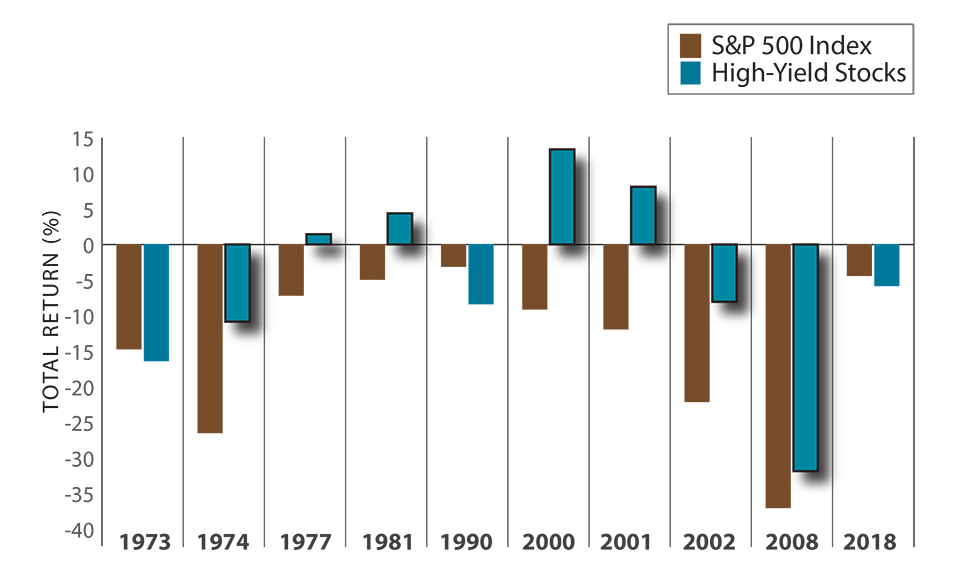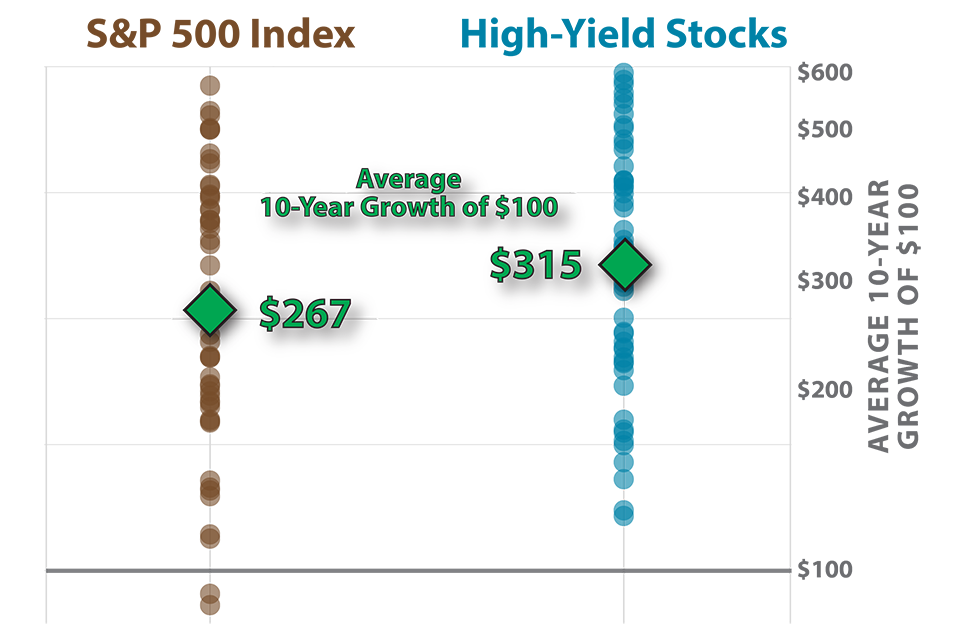
Greg Powell: Stocks are off to a rough start this year, with investors worried about inflation, higher interest rates, and military conflict. While it is far too early to know how this year will end up, clients are asking how income strategies tend to perform in down markets.

As of December 31, 2021. Sources: Morningstar Direct; Fama/French Research data library; Miller/Howard Research & Analysis. Based on the rolling 10-year annualized total returns, ending each calendar year. High-Yield Stocks data are provided by the Fama/French Research data library. The High-Yield Stocks portfolio uses Deciles 7 through 9 of portfolios created by dividend yield (value weighted returns), where 1 is the lowest and 10 is the highest.
Looking back at the last fifty years, the S&P 500 Index has had ten down years. High-yield equities, defined as deciles 7 through 9 of dividend yields, outperformed the S&P 500 in 70% of the down years, and actually had positive absolute returns 40% of the time. Overall, high-yield stocks outperformed the S&P 500 by almost 9% during the down years.
Of course, some equity income portfolios will do better, and some will do worse. What’s important is that we are searching for investment candidates from a pool that has historically provided downside protection.
While it’s gratifying to know that income stocks tend to outperform in down markets, our view continues to be that it’s best not to try to time the market. Fluctuations in the overall market are very unpredictable but typically buy-and-hold investors are well rewarded.

As of December 31, 2021. Sources: Morningstar Direct; Fama/French Research data library; Miller/Howard Research & Analysis. Based on the rolling 10-year annualized total returns. Each dot represents the trailing 10-year annualized total return, ending each calendar year. High-Yield Stocks data are provided by the Fama/French Research data library. The High-Yield Stocks portfolio uses Deciles 7 through 9 of portfolios created by dividend yield (value weighted returns), where 1 is the lowest and 10 is the highest.
Looking at the total return for 10-year holding periods ending over the past 50 years, investors in the S&P 500 saw a compound average annual return of 10.3%.
But the range of outcomes was large with the maximum annual return of 19.2% for the ten-year period ending in 1998 and a negative 1.4% annual return for the period ending in 2008.
High-yield equities have fared better. The average annual return for high-yield equities held over 10-years was 12.1%, meaning a $100 investment grew to $315, well ahead of the S&P 500 average return.
While rare, there were two 10-year periods, those ending in 2008 and 2009, in which the S&P 500 produced negative returns.
In contrast, over the last 50 years high-yield equities did not have a single 10-year period with a negative return.

As of December 31, 2021. Sources: Morningstar Direct; Fama/French Research data library; Miller/Howard Research & Analysis. Based on the rolling 10-year annualized total returns. Each dot represents the trailing 10-year annualized total return, ending each calendar year. High-Yield Stocks data are provided by the Fama/French Research data library. The High-Yield Stocks portfolio uses Deciles 7 through 9 of portfolios created by dividend yield (value weighted returns), where 1 is the lowest and 10 is the highest.
Looking at this chart differently, a $100 investment in the S&P 500 grew to $267 on average over ten years, whereas high-yield stocks grew to $315.
While results can vary, high-yield stocks have historically offered both better downside protection and higher average returns over long holding periods. For more information, please see our website at www.mhinvest.com.
